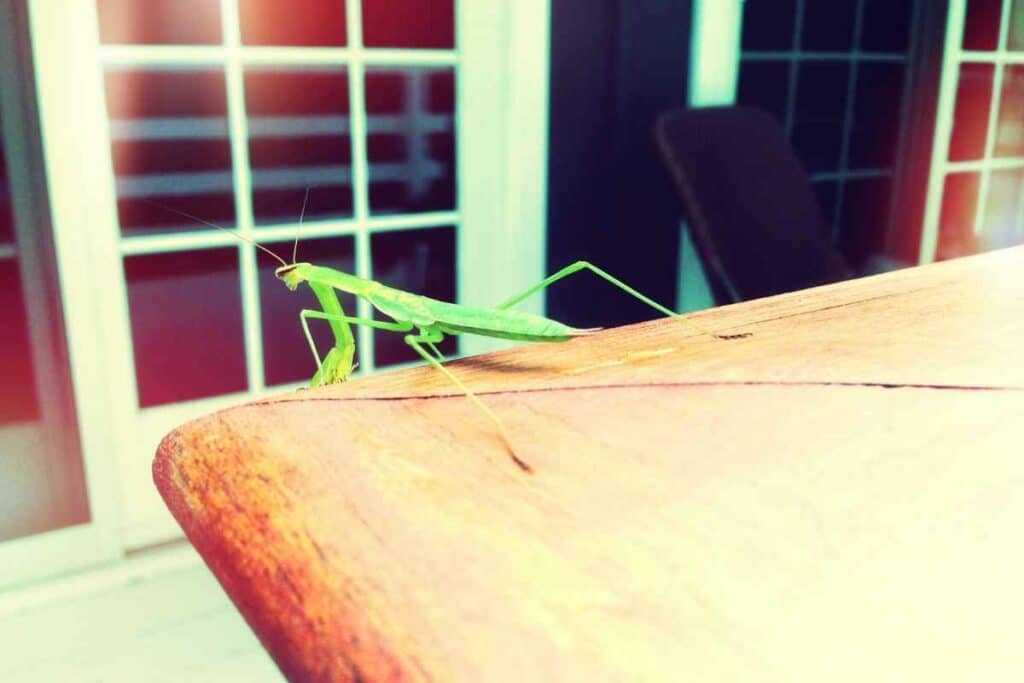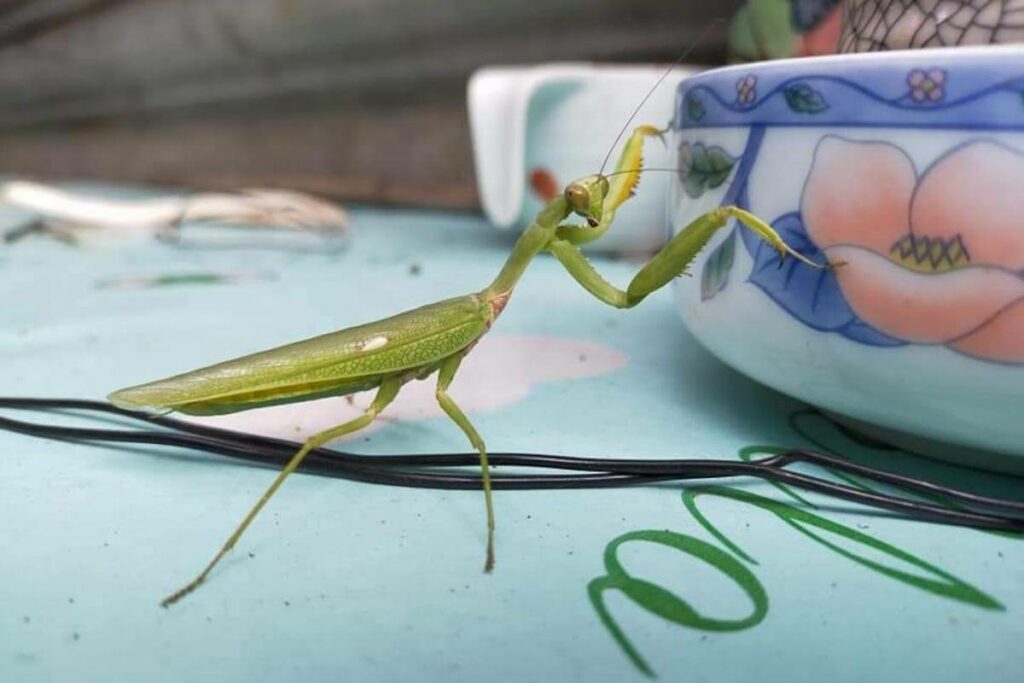The remarkable praying mantis does change colour, adding this remarkable ability to its unusual physical features and repertoire of deft movements and cryptic behaviours. The most common colour change is from green to brown and mantises use it to camouflage in their habitat.
In this article, we will explore the colour change phenomenon in mantises and the reasons it occurs.
Praying Mantis Habitat
You can find the praying mantis in a variety of habitats across the world.
Their prevalence is spreading from their original distribution in Europe and Asia to a more global distribution that now includes Australia and North America.

Yet despite being so widespread, these strikingly large insects have proven an elusive subject of entomological investigation.
These most lethal of insect predators have been known to exist in at least two distinct colourations:
- a characteristic grass-green
- brown shades ranging from yellow-ochre through to brown-sepia
There have been also been reports of the praying mantis being able to accomplish a complete colour change between these two shades.
But the incidence and consistency with which this happens is debated.
Do Praying Mantises Change Colour?
Numerous scientific studies have documented a green/brown and brown/green colour change in mantises both in the wild and captivity.
The colour change is achieved by moulting as they grow, with the shift in colour being observed just after they moult.
Moulting Is Key to the Praying Mantis Ability to Change Its Colour
Juvenile praying mantises pass through multiple moults as they grow to adult size.
Moulting is the shedding of the praying mantis old exoskeleton as it grows.
The stepwise growth stages of a praying mantis are known as instars.
A praying mantis will move through up to 9 instar stages between hatching and maturity. It is at these intervals that the colour changes are seen.

As mentioned below, environmental conditions heavily influence the moulting process, which takes up to 2 weeks to complete.
Moulting is an extremely vulnerable time for the mantis, which can die if it does not emerge from its old exoskeleton properly.
Interesting Discovery: Scientists have shown that the moult can align the mantis’ colour with its habitat; an extraordinarily adaptive behaviour that shows the high level of plasticity of the praying mantis.
Factors That Affect the Colour Change of the Praying Mantis
Studies have shown that several environmental factors determine the colour change that takes place in a praying mantis when it moults, consistent with the theory that the mantises are adapting to their environment:
- The colour of the environment where the moult occurs: the prevalent is a key determinant with juvenile mantises altering their colouration pattern with growth to suit changing seasonal foliage
- Humidity: it has been observed that increased humidity before a mantis sheds its exoskeleton produces a lighter green colour in captive or pet praying mantises. Humidity is one of the most important environmental factors for the successful moulting of a mantis.
- Light intensity: praying mantises that are is darker environments become darker.
- Air temperature: mantis species will also change their colour in response to the ambient temperature with the specific colour changes varying between sub-species.
Why Do Praying Mantises Change Colour?
With a greater understanding of the process of colour change in mantises and its influences, scientific enquiry has now turned to why these insects change colour.

Along with the clandestine behaviours of the mantis, like its rhythmic swaying, the reasons for the colour changes could be multiple.
Though the science on this matter is far from settled, there are two main reasons why praying mantises change colour.
1. Praying Mantises Change Their Colour to Protect Themselves
This is highly likely to be the main reason praying mantises alter their colour.
Being able to camouflage better amongst vegetation increases the chances of survival of juvenile mantises that are less able to defend themselves from predation by birds, bats, spiders, reptiles and even other praying mantises.
2. Nuanced Colour Changes May Also Enhance a Mantis Ability to Hunt Prey
The camouflaging of a praying mantis is critical to its lethal stalking abilities.
Camouflaged against background vegetation, a praying mantis moves slowly but deftly along foliage in search of prey, or wait for its target to inadvertently approach before going in for the kill.
Rounding up
Colour changes help to make the praying mantis a master of camouflage, which is key to its survival.
It is a true student of its environment, altering its colour, movement and positioning to blend in with twigs, leaves and other surrounding vegetation and even swaying with stalks of plants as they are moved by the wind.
The sequential colour changes of a praying mantis as it progresses through its instars, ensures that the adult mantis matches perfectly with its habitat.


